39 reading sodium on food labels
Sodium: How to Read Food Labels - Intermountain Healthcare Sodium: How to Read Food Labels. Reading food labels can help you monitor how much . sodium. you are getting in your diet. Here are some of the key parts to check: Notice the . serving size. Is that the same portion as you are eating? If your serving size increases, then the amount of sodium you eat also increases. This product has . 2 servings ... Food label language: Sodium - MSU Extension Erin Powell, Michigan State University Extension \ - January 10, 2014. Reduce sodium intake by understanding the nutrition label language. The U.S. Department of Agriculture recommends consuming no more than 2,300 milligrams of sodium each day for the general population. For those people who suffer from hypertension, diabetes, chronic kidney ...
PDF Reading Food Labels to Look for Sodium - ksw-gtg.com Easy-to-read food labels can help you find foods low in sodium. This will help you keep track of the number of grams (g) or milligrams (mg) you consume each day. According to Food and Drug Administration regula- tions, no manufacturer can say that their product is "low-sodium" unless they can prove that claim.

Reading sodium on food labels
Don't be salty: Reading food labels can help you lower your sodium ... They also asked people about how frequently they ate salty snacks/meals and their frequency of using food labels. The study revealed that people who routinely read food labels ate an average of 93 mg less sodium per day and were less likely to eat salty snacks compared to folks who rarely looked at nutrition labels. › food › food-labeling-nutritionChanges to the Nutrition Facts Label | FDA - U.S. Food and ... Mar 07, 2022 · Manufacturers with $10 million or more in annual sales were required to update their labels by January 1, 2020; manufacturers with less than $10 million in annual food sales were required to ... PDF Read the Nutrition Facts Label for Sodium! - National Institutes of Health Sodium 125mg 5% Total Carbohydrate 9g 3% Dietary Fiber 3g 12% Sugars 4g Protein 2g Vitamin A 35% • Vitamin C 6% Calcium 2% • Iron 2% Read the Nutrition Facts Label for Sodium! Nutrition Facts labels tell you what you need to know about choosing foods that are lower in sodium. Here is a Nutrition Facts label for frozen peas and carrots ...
Reading sodium on food labels. How to Understand and Use the Nutrition Facts Label | FDA - U.S. Food ... Nutrients to get less of: Saturated Fat, Sodium, and Added Sugars. Saturated fat, sodium, and added sugars are nutrients listed on the label that may be associated with adverse health effects - and... PDF Controlling Sodium and Reading Labels - Veterans Affairs 2) Check sodium content. Use food labels and packaging to help you select the lowest sodium option. If unable to buy low sodium versions, drain and rinse canned foods under running water to remove excess sodium. • Choose foods with 140 mg sodium or less per serving. • Avoid food with more than 300 mg of sodium per serving. How to Read a Food Label to Limit Sodium: Care Instructions - Alberta Choose foods with lower % Daily Value and smaller amounts of sodium. Look for foods with 5% Daily Value or lower. Foods with a sodium % Daily Value higher than 15% are high in sodium. Choose these less often. Learn how to use food labels to help you compare similar foods and make healthier choices. Buy low-sodium foods How to Read Sodium Percentages on Food Packages A "very low sodium" product must have less than 35 milligrams of sodium, while a "low sodium" product must have less than 140 milligrams of sodium. All in the Name Along with reading the food...
diabetes.org › reading-food-labelsReading Food Labels | ADA - American Diabetes Association The Nutrition Facts labels on foods are really the key to making the best choices. We'll cover the basics so that these labels make shopping easier for you. You've heard it all. From carb-free to low-carb, to whole and empty carbs, it's hard to know what it all means. Blood sugar highs and lows aren't always easy to understand. Reading food labels: Tips if you have diabetes - Mayo Clinic Put sugar-free products in their place. Sugar-free doesn't mean carbohydrate-free. Sugar-free foods may play a role in your diabetes diet, but remember that it's equally important to consider carbohydrates as well. A sugar-free label means that one serving has less than 0.5 grams of sugar. When you're choosing between standard products and ... How to Decode Salt on Food Labels: Low Sodium vs Reduced Sodium vs ... "Low sodium," "very low sodium," and "salt- or sodium-free" on food labels translate to less than 140, 35, and 5mg per serving, respectively. These front-of-the-package claims can help you spot legit lighter-sodium products at the supermarket—look for low sodium chicken broth, low sodium canned beans, low sodium bread, and low sodium soy sauce. Learn How the Nutrition Facts Label Can Help You Improve Your Health That means if you consume 2,000 calories in a day, added sugars should account for no more than 200 calories. Read the Nutrition Facts labels on your packaged food and drinks to keep track of sugars, fats, protein, and other nutrients. Most sodium we consume is from salt, and salt is commonly in processed foods.
A lawsuit accuses Amazon of selling suicide kits to teenagers : NPR A lawsuit accuses Amazon of selling suicide kits to teenagers Amazon sold the food preservative sodium nitrite, which lawyers say has no household use at high purity levels, to people who later ... › in-depth › sodiumSodium: How to tame your salt habit - Mayo Clinic Lite or light in sodium. The sodium content has been reduced by at least 50% from the regular version. Unsalted or no salt added. No salt is added during processing of a food that normally contains salt. However, some foods with these labels may still be high in sodium because some of the ingredients may be high in sodium. kidshealth.org › en › kidsFiguring Out Food Labels (for Kids) - Nemours KidsHealth A food with 5% or less of a nutrient is low in that nutrient. A food with 10%–19% of a nutrient is a good source of that nutrient. A food with 20% or more of a nutrient is high in that nutrient. The information on food labels is based on an average adult diet of 2,000 calories per day. What Sodium Labels Mean: A Guide to Decoding Sodium Labels Very Low Sodium: These products contain 35mg sodium or less per serving. Low Sodium: These products contain 140mg sodium or less per serving. Reduced (or Less) Sodium: This label means that the sodium level in the product has been reduced by 25 percent per serving from the original or a competitor's product. And if that product started with ...
Sodium and Food Labels | Sutter Health 1 can low-salt tuna packed in water: 82 mg sodium 1/3 cup light mayonnaise: 583 mg sodium 2 medium stalks celery: 64 mg sodium 2 green onions: 4 mg sodium 1 tablespoon low-sodium sweet pickle relish: 50 mg sodium Total = 783 mg sodium Per serving (2): 392 mg sodium Add to your meal: 2 slices no-salt-added wheat bread: 20 mg sodium
Sodium & Your Heart Health: How To Read Nutrition Facts On Food Labels Food can be considered low-sodium if the total sodium content is 140mg or less and is based on serving size. Overindulging on the portions with a low-sodium food can potentially be just as detrimental as eating a food that's high in salt. Additionally, people shopping for low-sodium foods should opt for packaging that features a 5% DV or lower.
Understanding Food Nutrition Labels | American Heart Association 1 - Start with the serving information at the top. This will tell you the size of a single serving and the total number of servings per container (package). 2 - Next, check total calories per serving and container. Pay attention to the calories per serving and how many calories you're really consuming if you eat the whole package.
PDF Food Labels and Potassium - American Kidney Fund Reading Food Labels to Manage High Potassium Potassium is a mineral found in many foods and drinks, and your body needs it to survive. Your kidneys help keep the right amount of ... Sodium Foods considered low in sodium have less than 140mg or 5% of your Daily Value per serving. High sodium foods have 20% or greater of your Daily Value per serving.
› article › 380166-why-is-readingWhy Is Reading Food Labels Important? | livestrong It's recommended that you cut back your sodium intake to less than 2,300 milligrams per day and your intake of added sugar and saturated fat to no more than 5 to 15 percent of your daily calories, according to the Dietary Guidelines for Americans 2010. Check food labels for guidance as to how to reach your goal of cutting back on these components.
› 145476 › diab_labelsReading food labels - Queensland Health o Sodium (salt) o Fibre (may not always be present) • Warning about the presence of food allergens e.g. nuts, gluten, milk etc. Nutritional claims and what they mean Food labels can display nutrition claims which may be misleading. The nutrition information panel is the best place to look to decide if the food is a good choice.
Sodium on the Nutrition Facts Label | FDA - U.S. Food and Drug ... FDA's Education Materials Sodium in Your Diet Fact Sheet A printable backgrounder that offers the basics on sodium's health effects, easy how-to's for using the Nutrition Facts label to reduce...
› eating-well › howHow to understand food labels | Eat For Health All ingredients in a food product must be listed on the label in order (Food Labels - What do they mean? Food Standards Australia and New Zealand, from largest to smallest by weight. You can use this to spot foods that might be high in saturated fat, added salt or added sugars because these ingredients are listed in the top three.
PDF Read the Nutrition Facts Label for Sodium! - National Institutes of Health Sodium 125mg 5% Total Carbohydrate 9g 3% Dietary Fiber 3g 12% Sugars 4g Protein 2g Vitamin A 35% • Vitamin C 6% Calcium 2% • Iron 2% Read the Nutrition Facts Label for Sodium! Nutrition Facts labels tell you what you need to know about choosing foods that are lower in sodium. Here is a Nutrition Facts label for frozen peas and carrots ...
› food › food-labeling-nutritionChanges to the Nutrition Facts Label | FDA - U.S. Food and ... Mar 07, 2022 · Manufacturers with $10 million or more in annual sales were required to update their labels by January 1, 2020; manufacturers with less than $10 million in annual food sales were required to ...
Don't be salty: Reading food labels can help you lower your sodium ... They also asked people about how frequently they ate salty snacks/meals and their frequency of using food labels. The study revealed that people who routinely read food labels ate an average of 93 mg less sodium per day and were less likely to eat salty snacks compared to folks who rarely looked at nutrition labels.

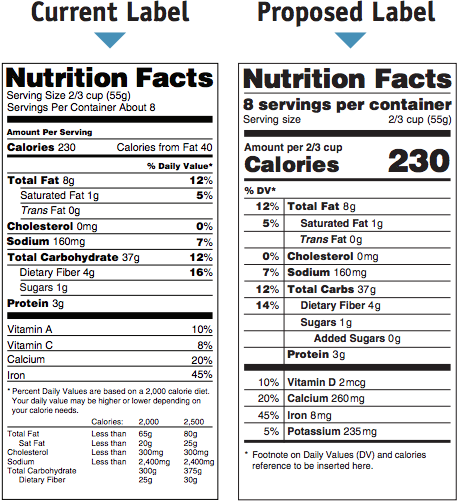


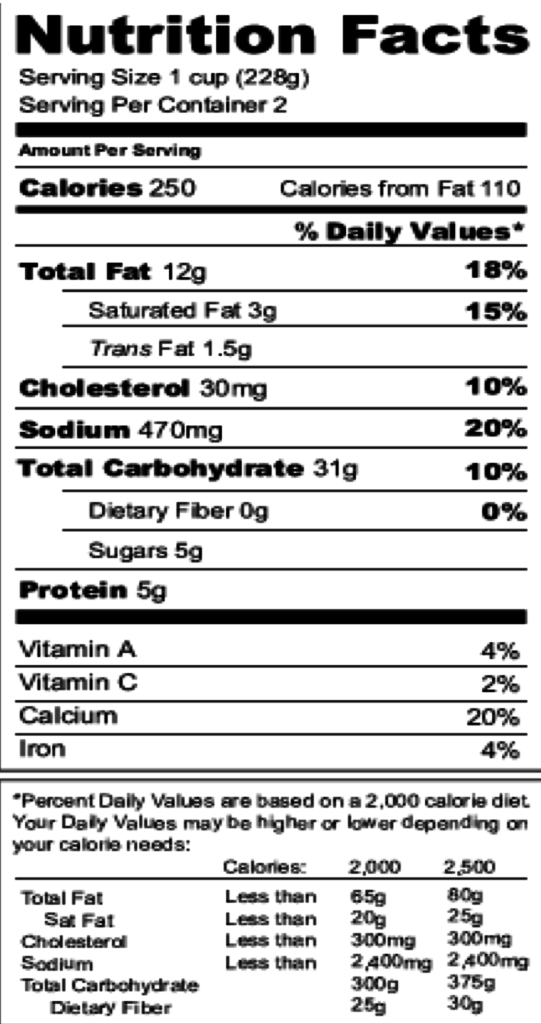






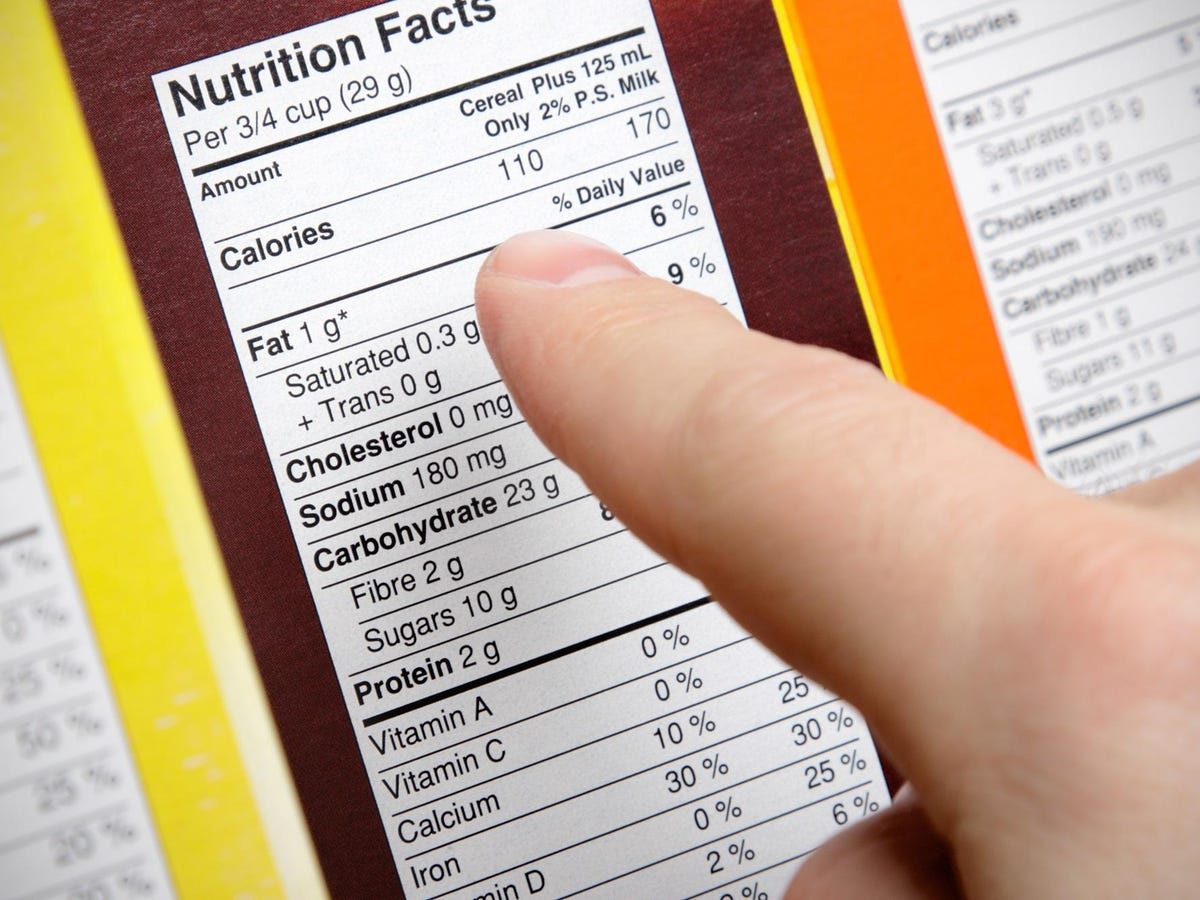
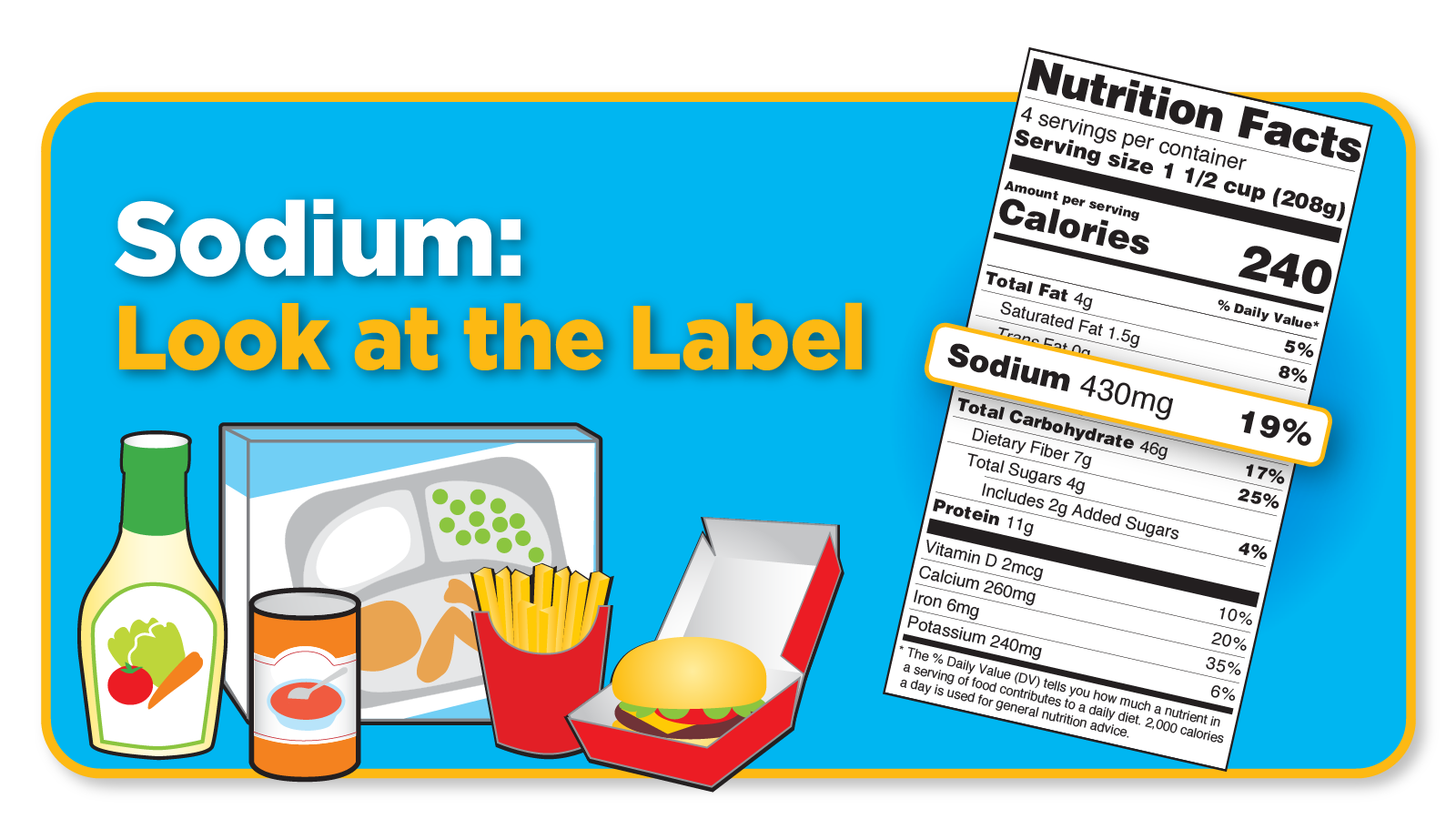
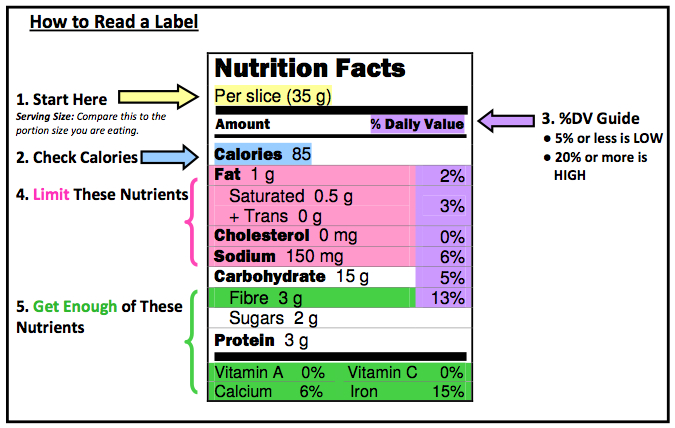


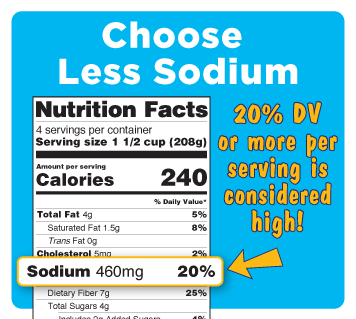


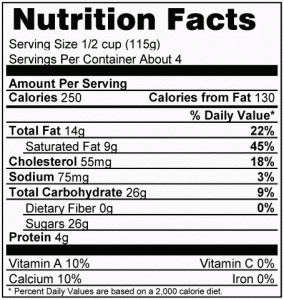
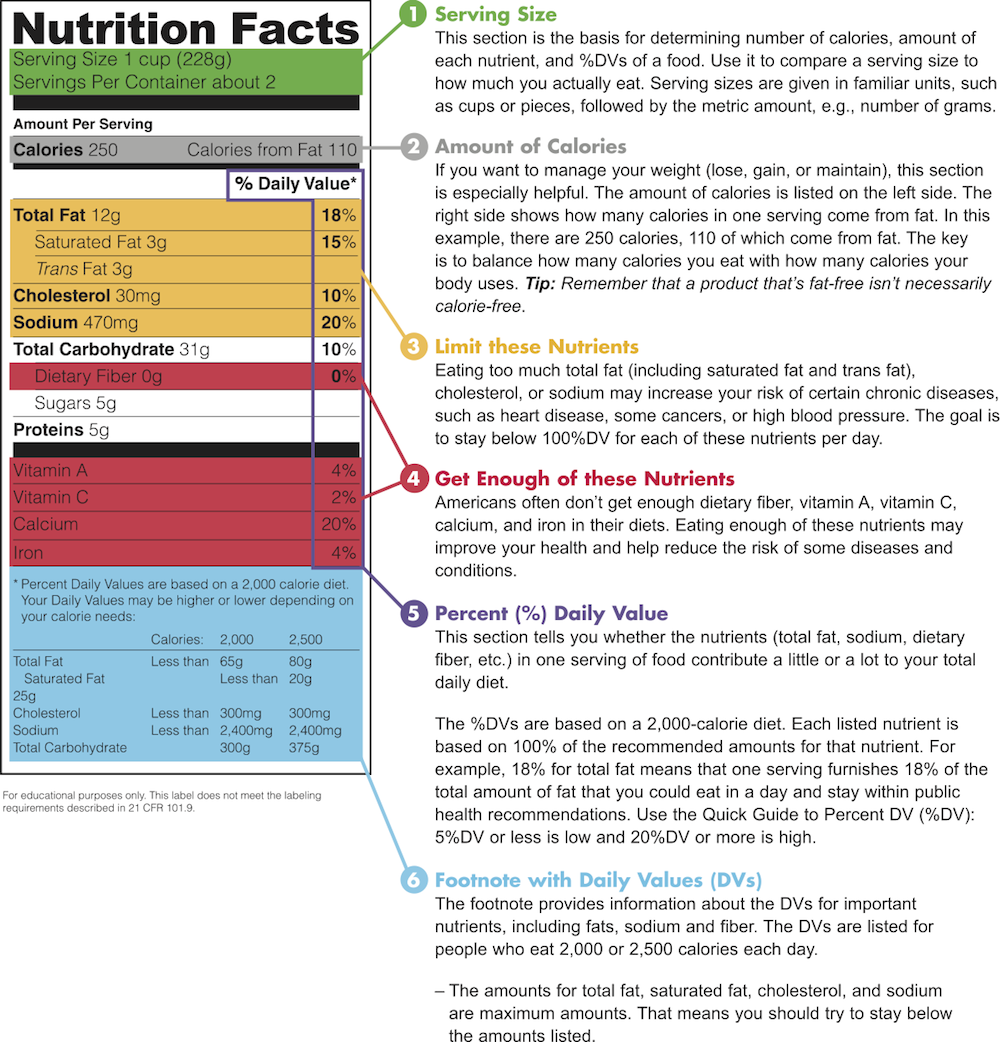

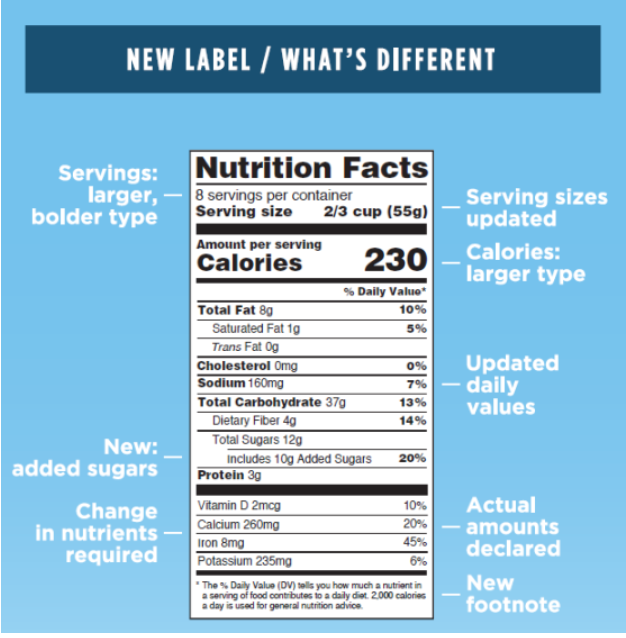









Post a Comment for "39 reading sodium on food labels"